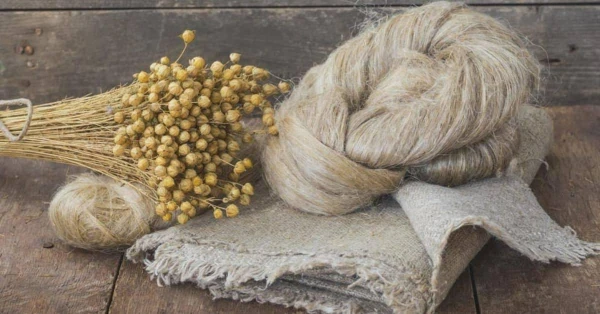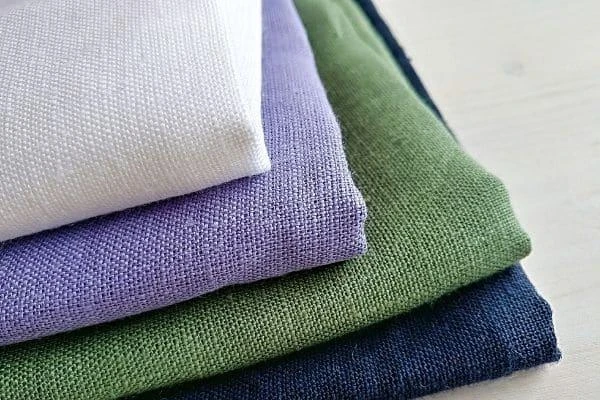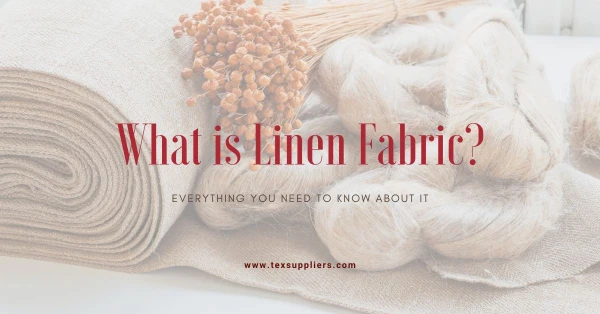Linen fabric has been used in the world for centuries, and still it's retaining its popularity for its strength, durability, and high absorbency. But do you know what and how such a famous fabric is made of? And where to use and how to take care of this natural and environment-friendly fabric? If you answered "No" to any of these questions, you're in the right place. In this article, we discuss linen and explain everything you need to know about linen fabric.
Table Of Contents
- What is Linen Fabric?
- Top Linen Fabric Producing Country:
- Types of Linen Fabric
- What is linen fabric made of?
- Properties of Linen Fabric:
- Physical Properties of Linen:
- Chemical Properties of Linen:
- What is linen fabric used for:
- Advantages of Linen Fabric
- How to take care of linen fabric?
- Final Thoughts
What is Linen Fabric?
Linen is an extremely durable yet lightweight woven or knit fabric made from flax plants. It is also known as flax fabric. It is much stronger, absorbent, dries faster, and is more lustrous than cotton. Thanks to these properties, this linen-made fabric is comfortable to wear in hot and humid weather.
It could have a good texture, coolness, and good wrinkle resistance by producing other fiber blends. Linen fabrics are predominantly used for homeware applications and many other textile and apparel products.
Top Linen Fabric Producing Country:
- China
- Italy
- Belgium
- United State of America
- Canada Russia
- Ukraine
- France
- Algeria
- Germany
- UK (Ireland, Scotland, England)
Types of Linen Fabric
Based on the materials used, there are four types of linen fabric available. They are
- Pure Linen
- Linen & Cotton Blended
- Linen & Ramie Blended
- Linen & Polyester Blended
Linen can be classified into 4 types below based on construction and weaving pattern
- Damask linen
- Plain-woven linen
- Loosely-woven linen
- Sheeting linen
What is linen fabric made of?

Linen fabric is made from bast fibers of the stem of flax plants (Linum usitatissimum). It’s the oldest known cultivated natural fiber in human history. The linen manufacturing process is as follows:
Linen Fabric Manufacturing Process
- Planting: Flax Plans will be ready for harvesting after approximately 100 days of plant growth. It has been painted in the cooler part of the year to avoid the death of flax plants.
- Growth: Nowadays, flax seeds are sown with machines. Herbicides are used to prevent reducing yields in flax crops.
- Harvesting: Once flax stems are yellow and seeds are brown, then plants are able to harvest. While it’s possible to reap flax by hand, machines are usually used for this process.
- Fiber Separation: After flax stalks are harvested, it’s processed through a machine which can remove leaves and seeds.
- Breaking: Next, the decomposed stalks are broken up. It separated the unusable outer fibers of stalks from its usable inner fibers.
- Combing: Now inner fibers are separated from the other fibers. It could be combed into thin strands. Once the fibers have been combed, they’re going to be ready for spinning.
- Spinning: To spin flax fibers, these shorts and combed fibers are connected with devices called spreaders and rovings. Then it's ready to be spun.
- Reeling: After being spun on a spinning machine, the output yarn is reeled onto a bobbin.
- Drying: Lastly, the flax manufacturer dries the finish of the flax yarn. And reel it onto bobbins. Then the yarn is then ready to be treated, dyed, and made into different types of textile products.
Properties of Linen Fabric:
- Good strength,
- Comfortable,
- Breathable,
- Twice as strong as cotton,
- Well, absorbent dyes and prints,
- Hand-washable or dry-cleanable,
- Crisp hand tailors,
- Well, lightweight to heavyweight,
- No static or pilling problems,
- Fair abrasion resistant, and so on.
Physical Properties of Linen:
|
Characteristics |
Properties |
|
a. Length |
18 to 30 inches |
|
b. Tensile Strength |
5.5 to 6.5 gm/den |
|
c. Elongation at break |
2.7 to 3.5 % |
|
d. Color |
Yellowish to grey |
|
e. Luster |
Brighter than cotton and slightly silky |
|
f. Elastic Recovery |
Not have enough elastic recovery properties like cotton |
|
g. Specific Gravity |
1.50 |
|
h. Moisture Regain (MR %) |
10 to 12%. |
|
i. Resiliency |
Very poor |
|
j. Effect of Heat |
Resistance to degradation by heat |
|
k. Effect of SunLight |
Not affected by the sunlight |
Chemical Properties of Linen:
|
Characteristics |
Properties |
|
a. Effect of Acids |
Highly damaged by densified acids. But low dense acids don’t affect it if it is washed instantly after the application of acids. |
|
b. Effects of Alkalis |
Excellent resistance to alkalis and also not affected by the strong alkalis. |
|
c. Effects of Bleaching Agents |
Not affected by Cool chlorine and hypo-chlorine bleaching agents. |
|
d. Effect of Organic Solvent |
High resistance to normal cleaning solvents. |
|
e. Effect of Micro Organism |
Mildews and bacteria can flourish in linen under hot and humid conditions. |
|
f. Effects of Insects |
Do not attack by moth grubs or beetles |
|
g. Dyes |
Not suitable to dye, but it can be dyed with direct and vat dyes. |
What is linen fabric used for:

Linen fabric is basically used in producing apparel and home fashions.
Apparel: Shirt, pants, suits, jackets, skirts, separates, blouses, shirts, children's wear etc.
Home Fashion: Bedsheets, pillowcases, dish towels, bath towels, tablecloths, upholstery luggage, aprons, wallpaper, curtains, draperies, upholstery, bedspreads, table linens, sheets, blankets, bags, napkins, diapers, etc.
Advantages of Linen Fabric
- Strong
- Comfortable
- Durable
- Versatile
- Sustainable fashion
- Suitable for every season
- Breathable
- Hypoallergenic
- Eco Friendly
- Absorbent
- Dyes and prints well
- Resists dirt and stains
- Withstands high heat
- Lint-free
- No Ironing Required
- Static Free
- Hand-washable or dry-cleanable
- Easy to Care for, and so on.
How to take care of linen fabric?
- Wash your linen clothes with cold water as washing with hot water may cause color bleeding
- It's better to wash linen fabric by using your hands or separately on a gentle cycle
- Don't dry clean. It can damage your cloth
- Linen has a trend to wrinkle as lie it on a flat surface
- Avoid exposing your linen cloth to the sunlight for longer
Final Thoughts
Of all kinds of natural fibers, it's linen that outreaches cotton in terms of strength, durability, comfort, breathability, and wicking. One of the biggest benefits of linen is its natural antibacterial properties. Considering all the facts explained above, people have been using linen clothes for centuries, and in recent years it has witnessed uprising popularity. In the future linen will retain its popularity and contribute to sustainable textiles and clothing.
You may also like: What is lining fabric?






.webp)





Comments - 00
Leave A Reply
Thanks for choosing to leave a comment.